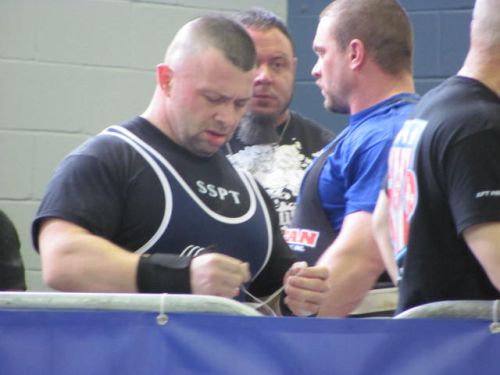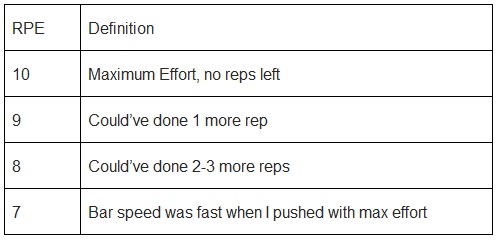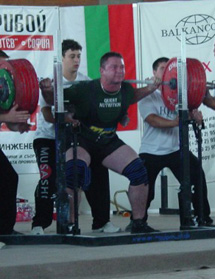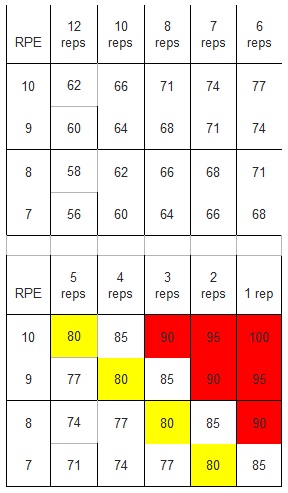Starting RTS
by Mike Tuchscherer

When an athlete approaches me for coaching, I have a big task on my hands. There is a lot of information I have to gather about them so I can write the most effective training programs possible. For each athlete, there are many small details that affect the way they will respond to training and my job as a coach is to find out what those details are and address them in training.
Since I conduct the majority of my coaching via email, I have developed some specialized questionnaires to help me extract these details about each new athlete. I pair that with the general knowledge base I have built up and the results speak for themselves.
But how can you as a Powerlifter do this for yourself? How do you get a training program tuned in to your body's unique responses? Fortunately for you, you have much of the information you need already. Many lifters who are in the intermediate and above stages of Powerlifting will already know many nuances of how they respond to training as well as the fundamentals of how a Powerlifting training program should work; things like having adequate recovery, training with low reps, etc.
Where many Powerlifters get lost is when topics come up such as volume, intensity, frequency, specificity, etc. Although understanding each of these topics at a high level can get complicated, a good working knowledge of them doesn't have to be.
I developed the Reactive Training System in part to provide athletes with this fundamental working knowledge. I'd like to share a little of that with you today.
Intensity!
When I bring in a new athlete to RTS, one of the first things I teach them is about Intensity. Different people have varied perceptions of what Intensity means, but for the purposes of Powerlifting, it almost always refers to the percentage of your 1RM.
One interesting thing about Intensity is that it is probably the variable which most determines your training effect. To put it another way, your Intensity will be the main thing that determines whether you get stronger, get bigger, build endurance, and so on. So as you look to educate yourself more and more on your training, pay special attention to what effects are produced by which intensities.
There are several ways programs seek to measure training intensity. Some require the athlete to lift a percentage of their 1 rep max. Others are based off of a 1 rep max minus X number of pounds. Still others use a certain rep max as a gauge. When I bring a new athlete into the program, we will usually use a sophisticated version of the last example. To understand how this works, you need to first understand RPE's.
RP what?
RPE stands for Rate of Perceived Exertion, or basically how hard a particular set felt. It's fairly common to hear people tell about an “easy triple” or a single they really had to grind out. These terms are fairly ambiguous and will likely mean different things to different people. RPE's are a numerical scale from 1 to 10 based on how hard a set feels. Each number has a rather specific meaning.

RPE's below 7 are usually for warm-up sets and restoration work. The benefit of using an RPE is that you be much more exact with how the weights felt. It might seem cumbersome at first to rate each set on a number scale, but you'll quickly become used to it and use it comfortably.

What does that have to do with Intensity?
In RTS, we give intensity recommendations as a reps and RPE pairing. So I might say do 3 reps at a 9 RPE. You'll know to work up to a weight that you do for 3 reps and when you rack it, you think to yourself, "yeah, I could've done one more rep."
This type of intensity recommendation has many benefits over percentage guides. Probably the biggest benefit is that it is flexible with your body. As you get stronger, the weights will naturally get heavier. If you're having a bad day and you're not capable of what you normally can do, it automatically adjusts the weights to fit your ability on that particular day.
It's interesting to note that your body responds to the weight on the bar and what you do with it - not to a magic percentage. The only thing a percentage tries to do is get you to load the correct weight. When used properly, it's not a bad way to go. But they aren't very often used properly. It's much easier to use a rep-and-RPE pairing both from the perspective of a coach and of an athlete. It requires less “busy-work” on the part of the coach and the increased flexibility will pay big dividends to the athlete as well.
How should I implement these ideas?
Percentage-based programs are probably the most common at this point in time. So, I'd like to address specifically how to convert your percentage based program into a RPE based program.

Using the charts above, you would find the reps your program calls for on the top axis. You then trace down until you find the percentage that your program requires. If you follow that line to the left, you will find the appropriate RPE to train with.
For example, let's say your program requires you to do three reps at 85%. First, you find the column that says 3 reps. Then you trace down until you find 85%. Finally, you follow that line left to find your RPE. In this instance, you can see that you need to train with 3 reps at a 9 RPE. This will approximate your 85% loads for most athletes.
A word of caution - some will want to in turn estimate their 1 rep max using this chart. I strongly recommend you don't do that with the chart given above.
Conclusion
If you decide to take the leap and use RPE based intensity programming, I bet you'll be happy you did. This style affords you greater control based on how your body is responding to training and it does it in real-time. This is a very powerful tool and can help you bust through your PR's! Make sure you check out the next issue of POWER! where I will cover tools to help with volume management!
More Articles By Mike Tuchscherer
Return to the Workout Articles Archive
|